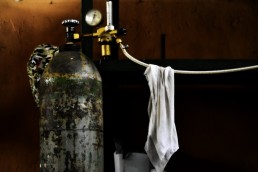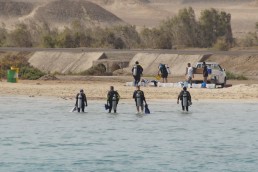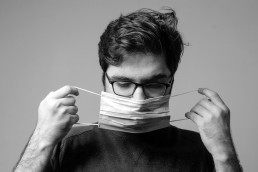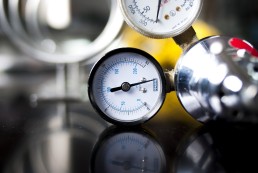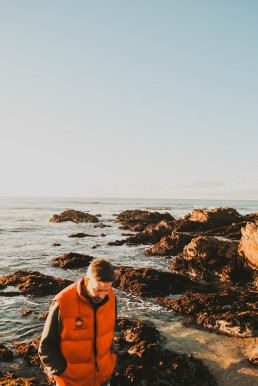Understanding the Factors Influencing the Cost of Medical Oxygen
When it comes to medical supplies, medical oxygen is a lifesaver for a great number of people. But the price of this essential resource depends on a lot of different things, so there are always going to be fluctuations in the market. Come with me as we explore the complexities of what drives medical oxygen prices.
Renting and refilling cylinders:
A lot of people get their medicinal oxygen in compressed gas cylinders. This cost structure is complex, frequently consisting of a combination of oxygen refill fees and cylinder rental rates. Navigating the financial ramifications of oxygen availability requires a grasp of this relationship.
Oxygen in liquid form:
Some people receive their medical oxygen in the form of liquid oxygen, which comes with a separate price tag. This includes the acquisition or leasing of specialised storage apparatuses in addition to a pricing structure determined by the required volume of liquid oxygen.
On-Site Production of Oxygen:
Larger healthcare facilities are the focus of on-site oxygen generating systems. These systems, which use cutting-edge technology such as Pressure Swing Adsorption (PSA) or cryogenic plants, need a substantial upfront financial commitment. But when you compare them to the ongoing costs of buying oxygen cylinders, they present a strong case for long-term cost savings.
Delivery and Servicing Fees:
There is a price for the convenience of oxygen delivery. For the delivery of oxygen cylinders or the management of liquid oxygen systems, suppliers could charge extra. The total cost is further complicated by the fact that these costs depend on factors like the frequency of deliveries and the distance to the delivery location.
Regional Differences:
Medical oxygen prices vary depending on where you live. They are not always fixed. This diversity is influenced by market rivalry, local laws, and economic considerations. As a result, the pricing environment is dynamic and adapts to different regional circumstances.
Let's be aware of the factors influencing this life-sustaining resource's accessibility as we navigate this terrain.
Tragbarer Sauerstoffkonzentrator am Strand?
Sie haben Angst um Ihren Sauerstoffbedarf, träumen aber vom Strand, der Sonne und dem Meer? Mach dir keine Sorge! Am Strand können Sie tragbare Sauerstoffkonzentratoren (Portable Oxygen Concentrator = POC) verwenden. POCs sollen Ihre Bewegungsfähigkeit verbessern. Sehen wir uns verschiedene Möglichkeiten an, wie Sie trotzdem den Meereswind genießen können und gleichzeitig die Gesundheit Ihrer Atemwege schützen.
1. Genießen Sie die Freiheit: Einer der Hauptvorteile von POCs ist ihre Portabilität. Diese Gadgets sind dafür gemacht, Sie überall hin mitzunehmen, wo auch immer das Leben Sie hinführt, sogar an ruhige Orte am Strand. Erleben Sie mit Ihrem zuverlässigen Sauerstoffpartner an Ihrer Seite die Freiheit, sich frei zu bewegen und die Meeresluft einzuatmen.
2. Wählen Sie den entsprechenden POC aus: Nicht alle POC sind gleich. Wenn Sie über einen Strandurlaub nachdenken, wählen Sie einen POC, der Ihren Bedürfnissen entspricht. Ein leichtes Design, eine robuste Konstruktion und die Kompatibilität mit einer Reihe von Sauerstoffquellen sind einige Dinge, auf die man achten sollte.
3. Batterieleistung: Sonnige, lange Strandtage sind möglich. Stellen Sie vor der Abreise sicher, dass der Akku Ihres POC gut aufgeladen ist. Wenn Sie viel Zeit am Strand verbringen, den Sonnenuntergang fotografieren oder gemütliche Spaziergänge im Sand unternehmen möchten, denken Sie darüber nach, zusätzliche Batterien einzupacken.
4. Schutzzubehör: Elektronik und Sand passen nicht immer gut zusammen. Denken Sie darüber nach, Schutzausrüstung für Ihren POC zu kaufen, beispielsweise eine Hülle oder eine Tragetasche. Mit Hilfe dieses Zubehörs können Sie Ihr Gerät vor Sonne und Sand schützen und es in einwandfreiem Zustand halten.
5. Trinken Sie viel Wasser: Die Hitze und der Seewind am Strand können zu Dehydrierung führen. Es ist wichtig, ausreichend Flüssigkeit zu sich zu nehmen, insbesondere wenn Sie zusätzlichen Sauerstoff benötigen. Nehmen Sie eine Flasche Wasser mit, halten Sie sich für kurze Zeit im Schatten auf und passen Sie die Sauerstoffzufuhr an Ihre Bedürfnisse an.
Mit einem tragbaren Sauerstoffkonzentrator ist der Strandbesuch nicht nur machbar, sondern auch sehr empfehlenswert. Wenn Sie die entsprechenden Vorsichtsmaßnahmen treffen, können Sie die Gesundheit Ihrer Atemwege bewahren und trotzdem das heilende Rauschen der Wellen, die Wärme der Sonne und den belebenden Meereswind genießen.
Bereiten Sie sich also auf Entspannung und Erholung vor, indem Sie Sonnencreme und Sonnenbrillen mit an den Strand nehmen. Jeder Atemzug am Strand wird zu einem Fest des Lebens und der Freiheit, wenn Sie Ihren tragbaren Sauerstoffkonzentrator dabei haben.
Unraveling the Distinctions Between Medical Oxygen and Diving Oxygen
Understanding the differences between diving oxygen and medical-grade oxygen is crucial when it comes to the world of oxygen. Each fulfils a distinct function and conforms to particular qualities specific to its intended use. Now let's examine the main differences:
Purity prerequisites:
Medical Oxygen: Highly valued for its therapeutic uses, medical oxygen has a purity level of at least 99%. This guarantees low contaminants and satisfies strict requirements for usage in healthcare.
Oxygen for Divers: Scuba diving oxygen and other diving gases must meet strict purity standards established by diving associations. High purity oxygen is still essential for diver safety even though it is not as rigorous as medical oxygen.
Rules & Guidelines:
Medical oxygen adheres closely to pharmacopeial standards and is regulated by health and medical agencies. The quality and safety required for healthcare environments are ensured by these regulations.
Oxygen for Divers: Organisations such as the International Organisation for Standardisation (ISO) and the Diving Equipment and Marketing Association (DEMA) regulate diving gases. Standards for purity and labelling are set by these organisations.
Goal:
Medical Oxygen: Used for medicinal purposes, medical oxygen is a mainstay in hospitals and clinics. Its use in patients is mostly in the medical field, where it is given for respiratory support and other treatments.
Oxygen for Divers: Used as a breathing gas during underwater operations, diving oxygen is the friend of scuba divers. Diving circumstances are catered to by different gas combinations such as trimix and nitrox.
Delivery and Packaging:
Medical oxygen is usually supplied in cylinders made specifically for that purpose, following strict guidelines for labelling and safety to guarantee secure handling.
Divers oxygen is supplied in cylinders marked with markings that correspond to particular gas mixes. Divers' underwater adventures can influence the tank arrangement they choose.
Gas Combinations:
Medical oxygen is oxygen gas that has been purified and supplied to meet therapeutic requirements in medical environments.
Oxygen for Divers: An essential component of gas mixtures such as trimix or nitrox, these blends enhanced with other gases, are essential for controlling the dangers involved in technical and deep diving.
To sum up, the distinctions between diving oxygen and medical oxygen are critical to people's safety and wellbeing; they are not merely details.
La différence entre les masques
Regardez notre courte vidéo ci-jointe pour en savoir plus sur ce que nous faisons...
A Guide to Travelling with Medical Oxygen
It's crucial to prepare ahead of time and make sure you abide by safety and transportation requirements while travelling with medical oxygen. Generally speaking, you can fly anywhere with medical oxygen by following these tips:
Travel Within the Country:
When travelling within your own country, find out the airline, train service, or bus company's policies on medical oxygen transportation. When it comes to transporting compressed or liquid oxygen as well as portable oxygen concentrators (POCs), most airlines have established protocols.
Travel Abroad:
When travelling abroad with medical oxygen, extra preparation and organisation may be needed.
Verify the import and usage policies of the nations you intend to visit regarding medical oxygen equipment.
Make contact with the airline and let them know ahead of time that you require medical oxygen.
Travelling on a cruise is a unique experience that offers sailing with serenity and comfort. Make sure you notify the cruise line of your need for medical oxygen and familiarise yourself with their regulations. You can sail with confidence if you are aware of the rules in advance.
Once More on the Road:
Are you driving yourself? Place your portable oxygen equipment safely, taking into consideration the security of your travels. Make your road trip into a therapeutic adventure by strategically planning pauses for rest and oxygen consumption.
Achieving New Dimensions:
Are you travelling to a high altitude location? If you need to modify your oxygen flow rates, speak with your healthcare provider. In order to guarantee a breath of fresh air at every elevation, let your lodging know ahead of time about your medical oxygen requirements.
Essentials of Travel Insurance:
Protect your trip with all-inclusive travel insurance that covers medical situations and includes provisions for oxygen supplies and related costs. Give priority to insurance that meets your specific medical requirements.
Prior to embarking on your selected route:
Consultation with a healthcare provider: Verify that you are well enough to travel and go over any changes to your oxygen therapy regimen.
Coordination of Oxygen Suppliers: Make sure your gear is ready for travel. Talk about the mechanics of getting more oxygen if necessary.
Dialogue with Transportation Providers: Get in touch with carriers, let them know ahead of time, and obtain the necessary paperwork.
Adventure, not fear, should characterise your medical oxygen journey. Following safety precautions and making advance plans will turn your trip into an enjoyable, uneventful adventure.
Top 5 medical oxygen machines and why
Diverse healthcare needs are met by a variety of cutting-edge devices and systems in the dynamic field of medical oxygen production. Let's explore the field of oxygen generation and identify five oxygen machines that are reshaping the environment:
1. Groundbreaking PSA Oxygen Generators:
These generators steal the show by using Pressure Swing Adsorption's magic.
Imagine them as sorcerers of nitrogen, skillfully and incredibly efficiently separating oxygen that is necessary for life.
Acclaimed for their dependability and affordability, they are the epitome of on-site oxygen experts.
2. Oxygen Generators with Membranes:
Discover the unseen heroes who use semi-permeable membranes to control the dance of gas separation.
Ideal for anyone looking for a flexible, economical choice for modest oxygen production.
They move fluidly to the beat of healthcare demands, much like the ballet dancers of the oxygen world.
3. Cryogenic Oxygen Plants:
These are the enormous oxygen-producing plants where air is transformed into liquid ambrosia. Designed to meet large-scale oxygen requirements, they are situated in the centre of industrial areas. Consider them the designers creating the plans for massive oxygen symphonies.
4. Oxygen Systems in Liquid:
Redefining storage and delivery, these devices turn oxygen into a liquid poetry. Living in cryogenic tanks, they protect facilities that are in high demand by maintaining a constant flow of liquid life. These devices are the silent conductors of a liquid oxygen orchestra for spaces with a lot of air movement.
5. Oxygen Generators Based on Electrolysis:
Imagine a procedure where oxygen and hydrogen paint their individual fates on water, serving as the canvas.
These generators, which are less common but yet impressive examples of ingenuity, use electrolytic artistry to produce high-purity oxygen.
They resemble the cutting-edge artists who are exploring the limits of oxygen generation.
Purity, capacity, and efficiency are important factors to consider when choosing the ideal oxygen partner in this complex dance. Think of it like selecting a dancing partner: it should fit your particular wants and rhythm.
Always seek the advice of industry experts and masters in the field of healthcare. Let the oxygen symphony continue, masterfully conducted by the symbiotic relationship between human skill and state-of-the-art technology.
Qui allez-vous appeler...???
Si vous prévoyez de voyager à l'étranger et avez un besoin indispensable d'oxygène médical durant votre séjour. Ne cherchez pas plus loin, OxygenWorldwide est là. Notre équipe aide les personnes voyageant avec de l'oxygène depuis plus de 25 ans...
Vous nous trouverez...
Aussi longtemps que vous connaîtrez OxygenWorldwide, vous nous trouverez pour tous vos besoins en oxygène lorsque vous explorerez de nouveaux sites, rendrez visite à votre famille ou lors de votre prochain voyage vers votre destination préférée.
Gilet d'oxygène médical - Regardez-ici...
Regardez notre vidéo sur notre gilet d'oxygène médical. Basé sur notre expérience dans ce secteur, nous avons créé notre propre gilet qui peut répondre à de nombreux besoins en oxygène médical.
Notre Collection ¨Respiration Pure¨
Regardez la vidéo de notre collection ¨ Pure Respiration¨, afin de voir comment OxygenWorldwide, depuis plus de 20 ans, utilise son expertise et ses connaissances pour aider de nombreuses personnes ayant besoin d'oxygène pour voyager, à atteindre leurs destinations et à profiter de leurs vacance.

